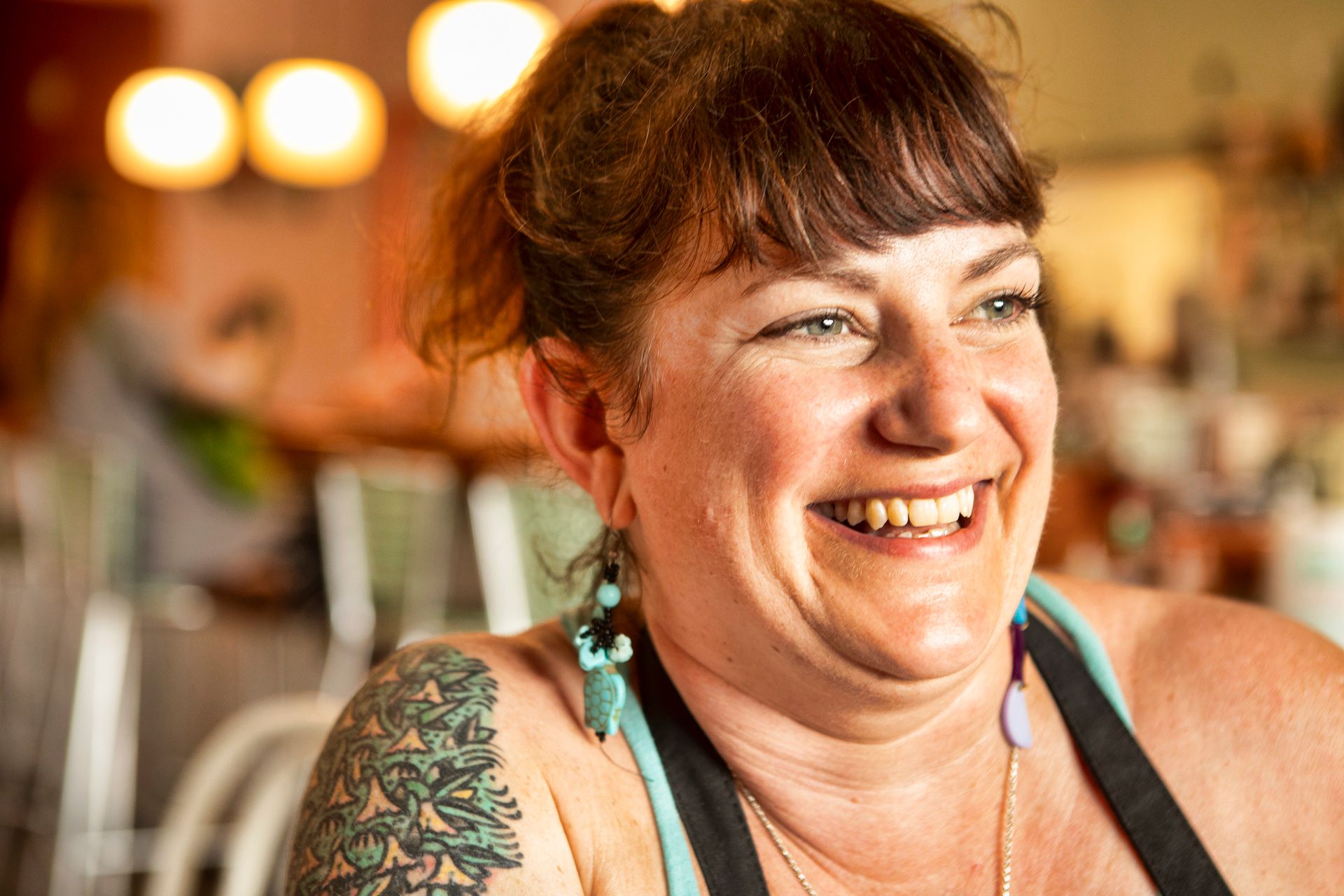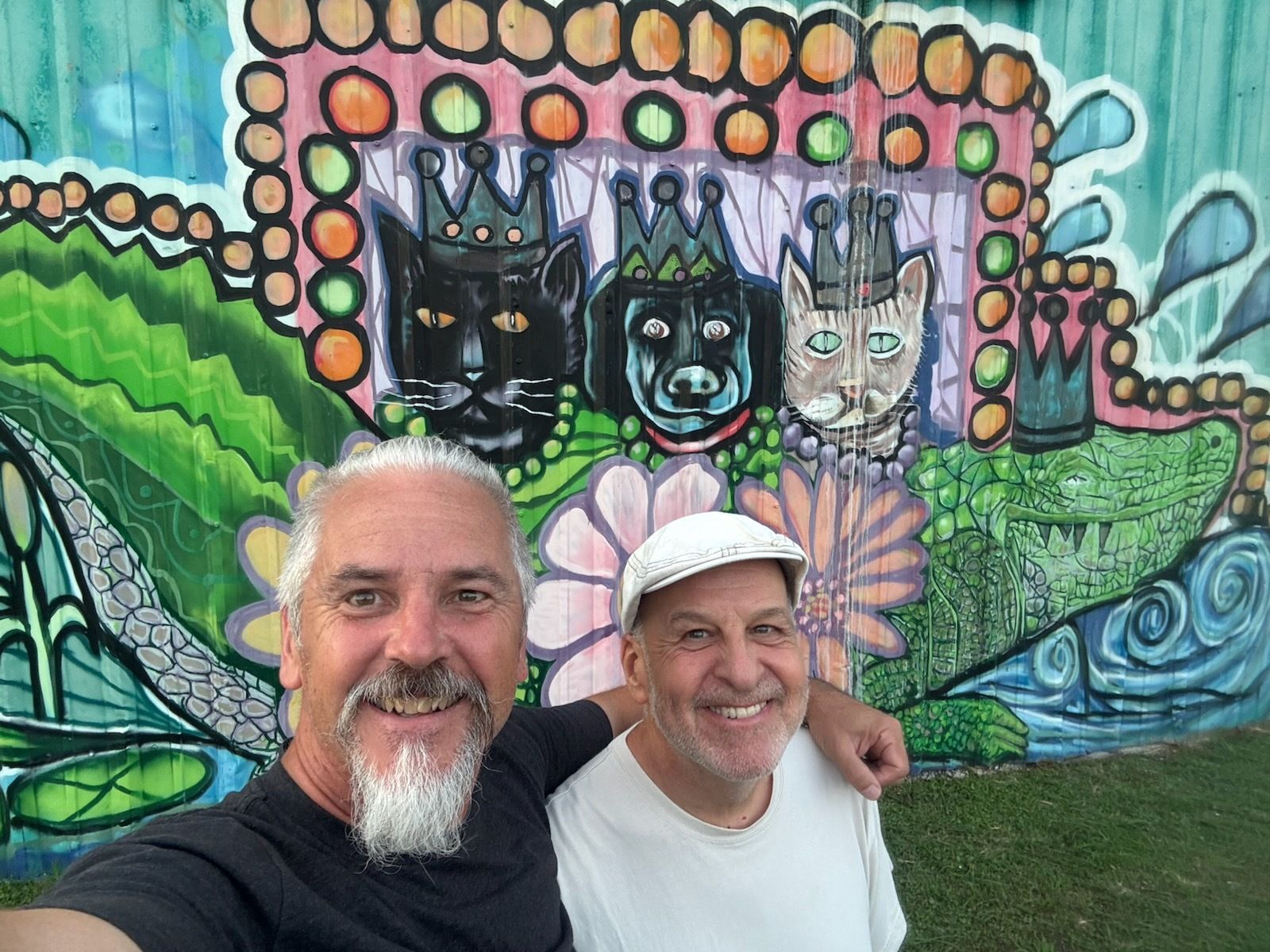- Barry Yeoman: Unabridged
- Posts
- My latest: The Lady Monger
My latest: The Lady Monger
“Whenever we get bycatch, and they come in and they’re gorgeous, we’re like, ‘Damn, that’s a hot fish!’” says Caitlin Carney, whose market is trying to support Gulf fishers. Plus, behind the scenes at our "Still Here" series.

Caitlin Carney. Photo by John Noltner.
Dear friends,
Caitlin Carney calls herself the “Lady Monger.” Her business, Porgy’s Seafood Market, is a purple storefront on a busy corner in Mid-City New Orleans. It feels like a cross between a fish shop, a lunch joint, and a neighborhood bar. It’s a market with a mission: to reconnect New Orleanians with Gulf seafood.
A lot of the fish sold in the city is not from the Louisiana coast. Most shoppers get their seafood from big supermarket chains, which don’t always make buying local a priority. And those shoppers often choose the fish that’s most familiar, like salmon or tilapia, which are not from the Gulf of Mexico. Meanwhile, Caitlin says, it’s getting less and less profitable for independent fishers to harvest seafood from the Gulf.
Caitlin is trying to educate consumers and also trying to make it more profitable for fishers in Louisiana to keep working. One way she does this is by selling bycatch, which is unintended, non-target catch. Often bycatch is thrown away, even when it’s delicious, and the fisher makes no profit.
“We love what we call hot fish, which are hot fish—you know, they’re sexy,” she says. “One of our favorite bycatch is scorpionfish, which is really fantastic as a sashimi. We got some longtail bass in the other day that I didn’t even know you could get. So, yeah, it’s always an adventure.”
If Caitlin can buy it and then convince her customers that it’s worth trying, that means additional revenue for the fisher.
My interview with Caitlin is Week 7 of “Still Here,” a multimedia series about the people who are working to preserve wetlands and traditions along the Louisiana coast. It’s a collaboration with photographer John Noltner and his non-profit, A Peace of My Mind, which uses art and storytelling to bridge divides. You’ll find links to all the episodes here.
A peek (or listen) behind the scenes:

John Noltner and Barry Yeoman, Tchoupitoulas Street, New Orleans.
Last fall, I declared 2025 as My Year of Collaboration. I wanted to work side-by-side with talented people I love and respect. When John texted me last November with the kernel of idea that became our Louisiana project, I responded 18 minutes later with a yes.
Midway through the release of “Still Here,” John and I sat down and debriefed on the collaboration. We covered a lot of ground: our shared creative vision; what it means to work with a close friend (and to let go of control); the hope we gleaned from the stories we heard in Louisiana. We also discussed my stutter—how it governs my interview style, and why I made certain audio-editing choices. You can find our unedited conversation on all your favorite podcast platforms by searching for “A Peace of My Mind,” or you can follow this link.
Plus, articles I’ve been reading:
Brady Dennis on a musician who remains missing a year after Hurricane Helene, with photos by Allison Joyce.
Sophia Stewart on seeing herself, as a person who stutters, in 18th-century sculptures.
Nikole Hannah-Jones on how we remember Charlie Kirk.
Poetry I’ve been reading:
Moudi Sbeity’s “Diagnosis: Human, Prognosis: Will Die.”
Did you see the moose just now, grazing with her calf?
Start living, like her. She dreams of nothing that will come.
A podcast series worth your time:
Louisiana might struggle in many arenas, but it leads the nation in coastal restoriation. If you want to dive deeper into those efforts, check out Eve Abrams’ sound-rich series “Wetlands Radio.” It’s on WWNO’s “Louisiana Considered,” which is available here and on the podcast apps. Start with Sept. 15 and continue through Sept. 26. You’ll recognize some of the voices.
Next week is the last episode of “Still Here.” It’s one of my favorites: Bruce Sunpie Barnes, whose dual career as a naturalist and musician ties together environmental and cultural preservation. See you in a week.
All best,
Barry Yeoman